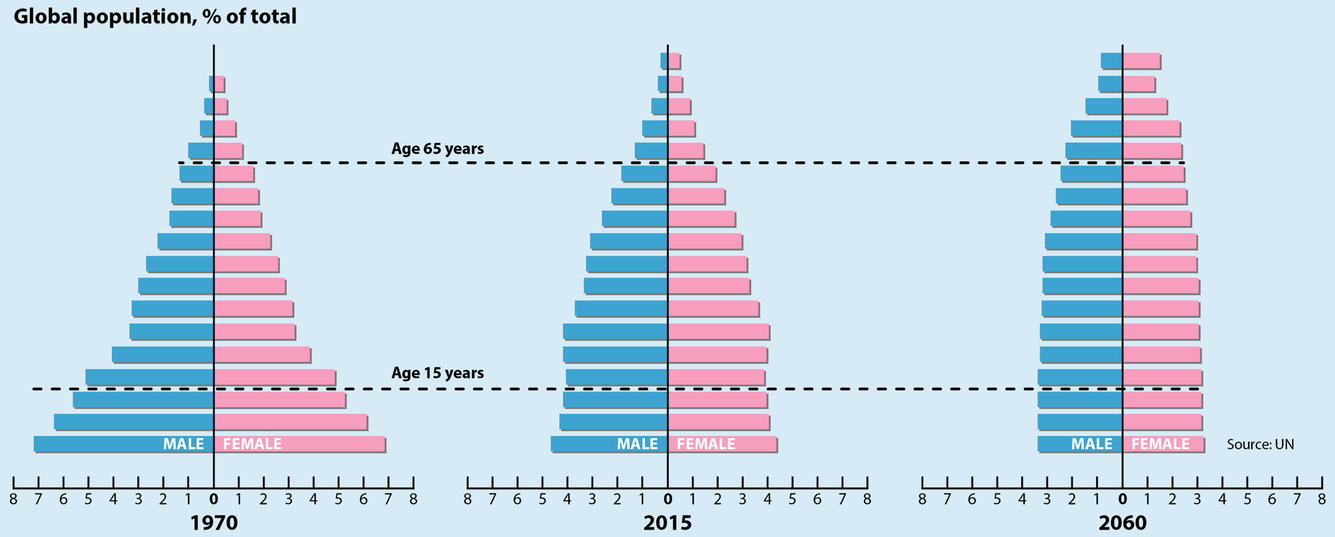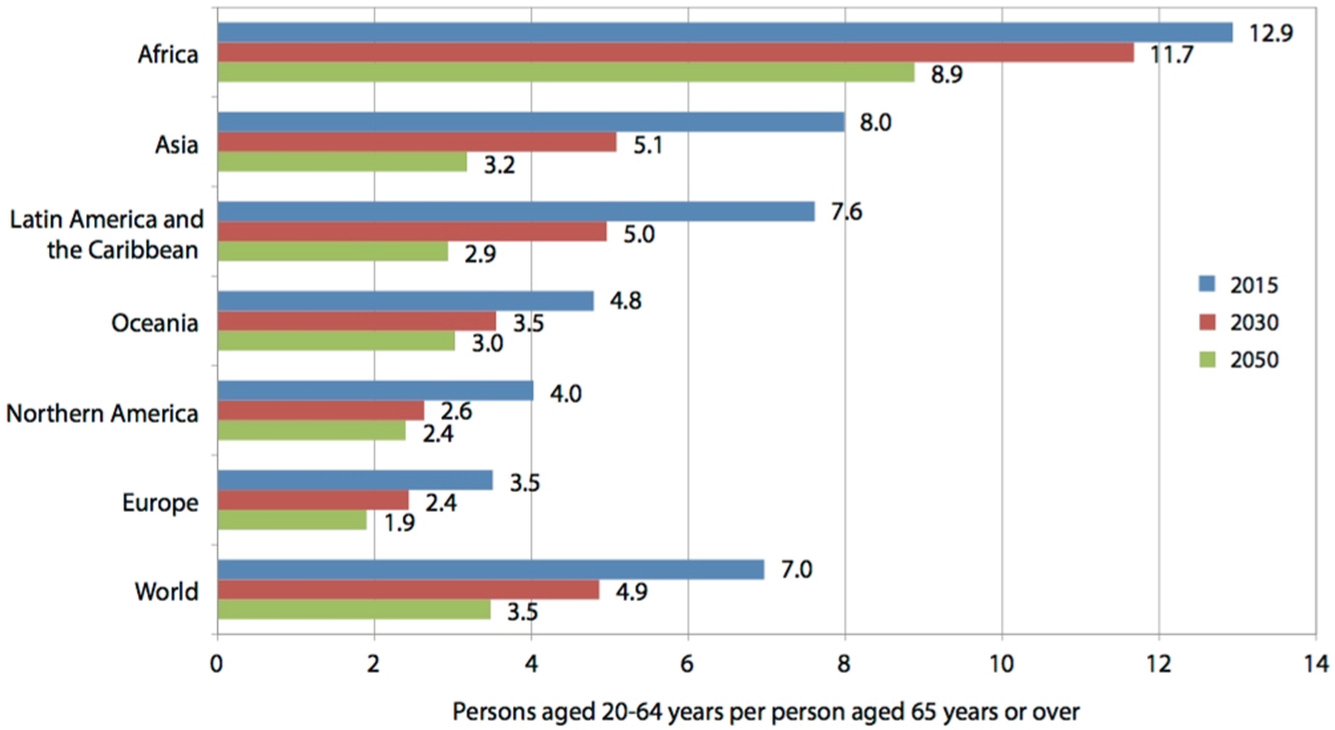
Rectangularization of the global aging pyramid from 1970 to 2060
Projected global population increase by age group 2005–2050
Age | Percent increase (%) |
|---|---|
0–64 | 21 |
65+ | 104 |
85+ | 151 |
100+ | 400 |

Global distribution of population 65 and over in 2015 and 2050. Source: U.S. Census Bureau, 2013, 2014a, 2014b; International Data Base, U.S. population estimates, and U.S. population projections
Potential Support Ratio

Potential support ratios by region, 2015, 2030, and 2050. Source: UN Department of Economic and Social Affairs
With the shrinking potential support ratio, who will care for the growing number of older adults? Immigration is one answer, but the overarching response should be that healthcare and social support systems become more efficient to meet the significant needs of this cohort. Informal caregivers make invaluable contributions, but they cannot meet the complex care needs of the growing older population. This care gap is further magnified when considering the rates of comorbidity and cognitive and functional limitations of the older population.
We will begin with some facts about healthcare in the United States and then describe solutions to the challenges we have laid out.

Open Access This chapter is licensed under the terms of the Creative Commons Attribution 4.0 International License (http://creativecommons.org/licenses/by/4.0/), which permits use, sharing, adaptation, distribution and reproduction in any medium or format, as long as you give appropriate credit to the original author(s) and the source, provide a link to the Creative Commons licence and indicate if changes were made.
The images or other third party material in this chapter are included in the chapter's Creative Commons licence, unless indicated otherwise in a credit line to the material. If material is not included in the chapter's Creative Commons licence and your intended use is not permitted by statutory regulation or exceeds the permitted use, you will need to obtain permission directly from the copyright holder.